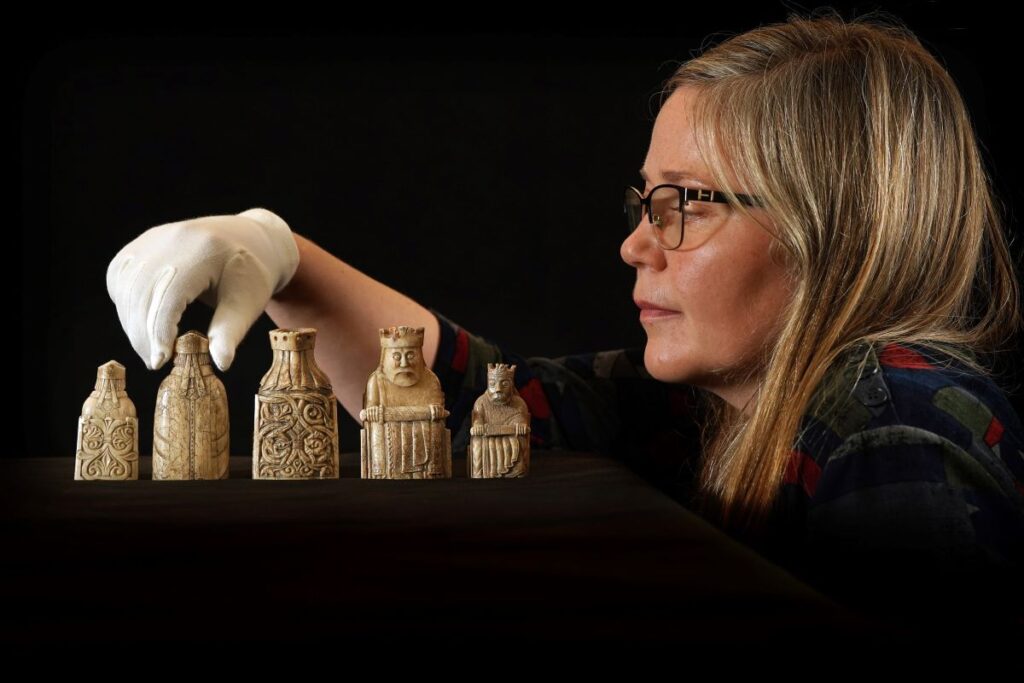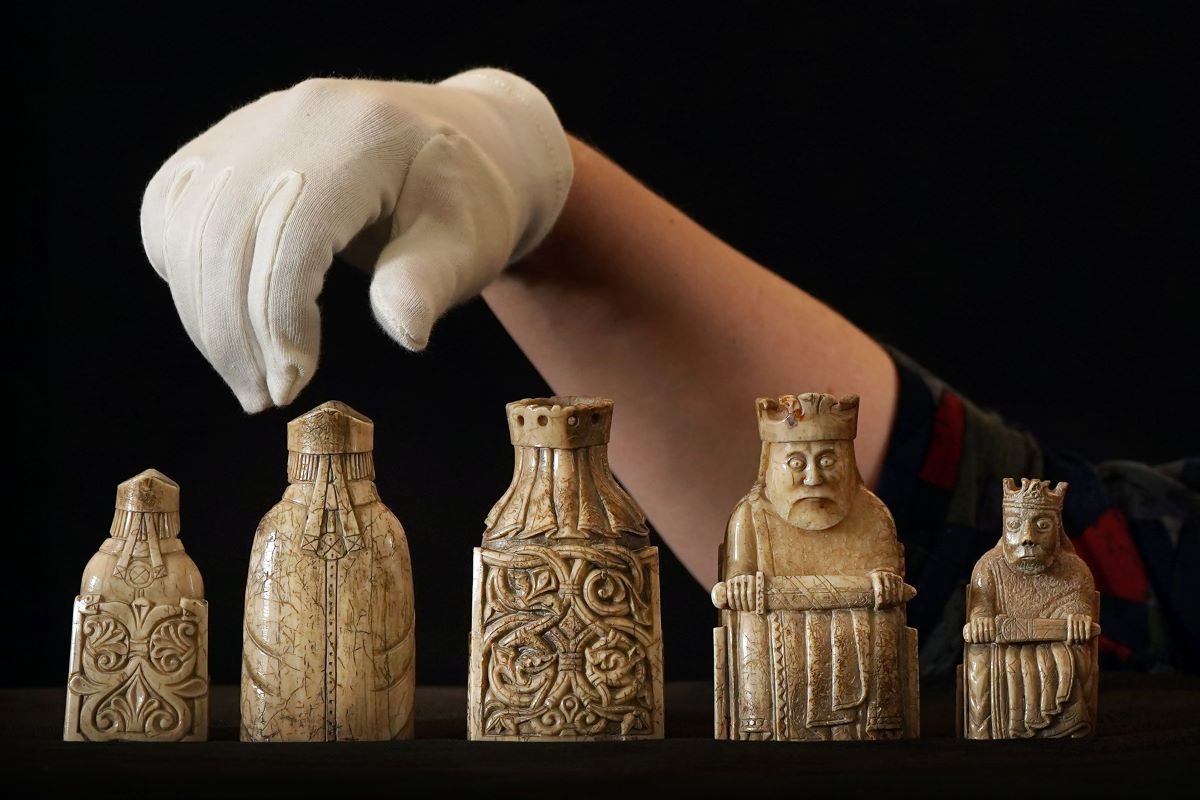
Historic Lewis chessmen redisplayed to allow visitors to see their backs for the first time
The historic Lewis chessmen have been redisplayed in a case which allows visitors to see their backs for the first time.
Made from walrus ivory and sperm whale teeth, the pieces range from the wide-eyed ‘Berserker’ who gnaws frantically on his shield, to a Queen who rests her chin in her hand, a rather fed-up look on her face.
The carved figures are famous for their expressions but their backs are just as intricately detailed. The thrones feature complex vine scroll and interlace carvings, while the hair on some figures tumbles down their backs in stylised ringlets.
The display at the National Museum of Scotland in Edinburgh means people can now view the pieces ‘in the round’ and appreciate the intricate carving from all angles.
The pieces are thought to have probably been made in Norway around 1200 and were part of a large hoard discovered in Lewis in the early 19th Century.
In 1200 Lewis was part of the Norse-Gaelic Kingdom of the Isles, encompassing islands and land along the west coast of Scotland as well as the Isle of Man. There was a strong Scandinavian influence in the region and Norway controlled the kingdom at times.

Credit: Stewart Attwood
The pieces offer fascinating insights into the growing popularity of chess in medieval Europe and the international connections of western Scotland during that period.
‘The Lewis chess pieces are much loved thanks in part to their iconic expressions and poses, however these are objects which were designed to be appreciated from all angles,’ said Dr Alice Blackwell, from National Museums Scotland.
‘After all, each player sees the backs of their own pieces. The carver has really gone to town on the throne backs in particular, with entwined tendrils and knotwork that are really sumptuous compared to the simpler fronts.
‘I’m delighted that visitors to the National Museum of Scotland will now have the chance to get to know these charming characters in the round.’
The hoard contained 93 gaming pieces in total, from at least four chess sets as well as other games.
Eleven pieces are in National Museums Scotland’s collection. The remaining 82 are in the British Museum’s collection, six of which are on loan to Museum nan Eilean in Lewis.
It is not known who buried the pieces or why. They may have been the property of a merchant, sailing from Scandinavia to Scotland, Ireland or the Isle of Man to sell these highly-prized playing sets.
But given that Lewis was home to powerful people with close ties to Norway, the pieces may instead have been the treasured possession of a local prince, bishop or other leader.
Read more News stories here.
Subscribe to read the latest issue of Scottish Field.
TAGS

